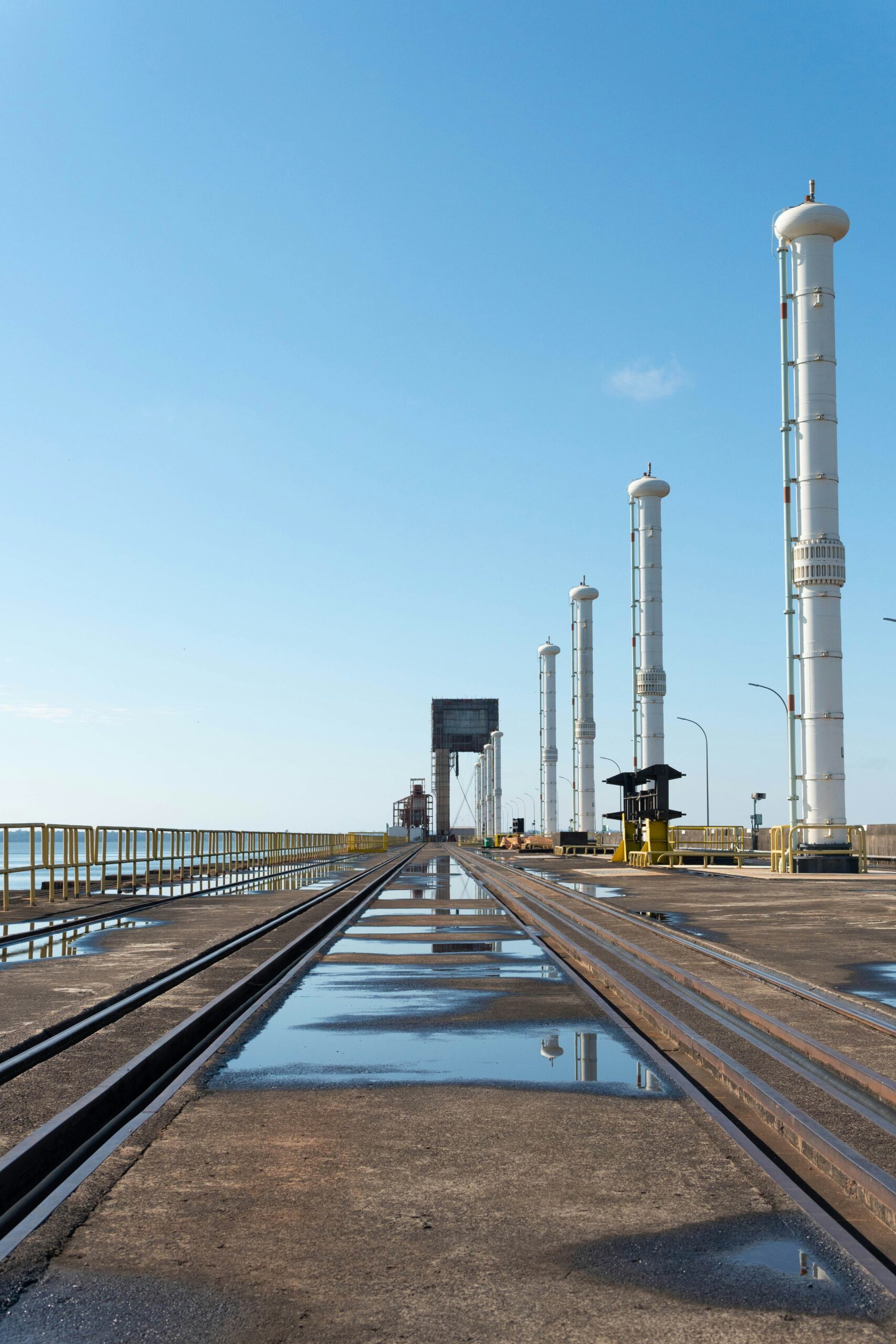Introduction to Adani Group’s Global Expansion Plans
The Adani Group, a prominent player in the global energy and infrastructure sector, has embarked on an ambitious journey to develop 10 gigawatts (GW) of hydroelectric projects worldwide. This initiative represents a significant step in the company’s overarching strategy to diversify its energy portfolio and is an integral part of its commitment to sustainable and renewable energy solutions. By venturing beyond its Indian roots, the Adani Group aims to harness the potential of clean hydroelectric power on a global scale, reinforcing its position as a leader in the industry.
Hydroelectric energy is recognized for its efficiency and reliability as a renewable resource, making it a cornerstone in the transition toward greener energy systems. With the potential to generate substantial power while minimizing carbon emissions, hydroelectric projects are pivotal in addressing global energy demands while combating climate change. In a world increasingly focused on sustainable development, the importance of such initiatives cannot be overstated.
The Adani Group’s expansion into international markets for hydroelectric projects aligns seamlessly with its broader vision, which encompasses the promotion of innovative energy solutions. By investing in hydroelectric power, the company not only aims to contribute to the global shift towards renewable energy but also seeks to enhance energy security and economic development in the regions it enters. This strategic move reflects a growing recognition of the vital role that renewable energy sources play in achieving environmental sustainability and energy independence.
As the Adani Group charts its course forward, its commitment to developing hydroelectric resources will undoubtedly have a lasting impact on the energy landscape. The company is positioning itself to not only meet the energy needs of today but to also pave the way for a more sustainable and resilient energy future.
Potential Locations for Hydro Projects: Countries Under Consideration
As the Adani Group pivots toward ambitious expansion by developing 10 GW of hydroelectric projects globally, several nations are being considered as potential sites for these initiatives. Among them, Nepal and Bhutan stand out due to their rich water resources, favorable topography, and existing infrastructure for hydropower generation.
Nepal, nestled in the Himalayas, boasts an extensive river network that presents significant opportunities for hydroelectric power generation. The country has the capacity to harness approximately 83,000 MW of hydropower, making it a prime candidate for large-scale projects. However, the implementation of these projects must contend with regulatory hurdles, environmental concerns, and the need for substantial investment in infrastructure to facilitate energy transmission.
Similarly, Bhutan is renowned for its commitment to hydropower, which currently represents the bulk of its energy exports. The mountainous terrain is ideal for constructing hydroelectric dams, and Bhutan has established successful partnerships in the sector. Nevertheless, challenges such as intermittency of water flow during dry seasons and dependence on external markets for electricity remain pivotal issues.
Turning to Africa, countries like Kenya and Tanzania are also on the radar. Kenya, with its ambitious Vision 2030 development plan, is actively seeking to diversify its energy generation mix, and hydropower is a critical component. The potential for river systems such as the Tana River is considerable, but challenges related to environmental conservation and community displacement must be addressed. Tanzania, on the other hand, is rich in freshwater resources and exploring renewable energy sources to bolster its economic growth, making it a viable candidate for hydroelectric development.
Lastly, Vietnam has been aggressively pursuing renewable energy to meet its growing demand. The large river basins in the country provide adequate potential for hydro projects; however, Vietnam faces challenges such as climate change impacts and land-use disputes which could complicate development efforts.
The strategic significance of these countries in the global renewable energy landscape cannot be overstated. Their geographical advantages, coupled with the increasing emphasis on sustainable energy sources, position them as key players in the worldwide transition to renewables.
Aligning with Sustainability Goals: Net-Zero Emissions by 2050
The Adani Group has set an ambitious target to achieve net-zero emissions by the year 2050, demonstrating its commitment to sustainable development and environmental stewardship. This initiative aligns with the global call for industries to transition to cleaner energy sources, particularly in light of escalating climate change concerns. The development of hydroelectric projects is a cornerstone of the company’s strategy, as it positions itself as a leader in the renewable energy sector.
Hydroelectric power, derived from the gravitational force of falling or flowing water, is recognized for its low environmental impact and capacity for electricity generation. By investing in 10 GW of hydroelectric projects worldwide, the Adani Group aims not only to harness renewable energy but also to contribute significantly to reducing carbon emissions. The company’s foray into the hydroelectric domain reflects a broader commitment to sustainable practices, encompassing various renewable energy sources, including solar and wind as well.
As global energy demands continue to rise, the role of hydroelectric power becomes increasingly critical. In many regions, it acts as a reliable source of energy that complements intermittent renewable sources, such as solar and wind, thus facilitating a more balanced energy mix. The Adani Group’s initiatives are designed to enhance energy security while minimizing ecological impacts. By adopting state-of-the-art technologies in hydroelectric project deployment, the company is working towards maximizing efficiency and ensuring sustainable water management.
The transition to hydroelectric power and other renewable resources is not merely a business initiative; it is part of a larger strategy to fuel a global movement towards sustainability. As the world moves closer to the target of a net-zero future, the actions taken by companies like Adani represent invaluable contributions to combating climate change and fostering a greener planet.
Future Implications and Industry Impact of Adani’s Expansion
The Adani Group’s strategic move to develop 10 GW of hydroelectric projects globally is poised to have significant ramifications across the energy sector. By diversifying its portfolio and expanding into international markets, Adani is not only enhancing its position as a key player in the renewable energy landscape but also reshaping the competitive dynamics among energy producers. This expansion will likely lead to increased competition as other energy companies may feel the pressure to escalate their own renewable initiatives in order to maintain market share and meet consumer demand for sustainable energy solutions.
Moreover, the implications of such large-scale hydroelectric projects extend beyond the corporate sphere; they have the potential to substantially affect local economies. By creating jobs in construction, operation, and maintenance of these facilities, hydroelectric projects boost employment opportunities in regions where they are established. Local businesses may also benefit from increased economic activity, leading to an overall improvement in community prosperity. Furthermore, these projects can provide essential energy resources, potentially stabilizing and reducing energy costs for local consumers.
In addition to economic boosts, Adani’s commitment to hydroelectric energy aligns with the global imperative for renewable energy adoption, contributing to a reduction in carbon emissions and fostering sustainable development. The expansion can garner significant attention from governments and organizations invested in climate change mitigation. As such, there is a high likelihood of developing partnerships with other entities, including international firms, technology providers, and stakeholders focused on supporting renewable energy initiatives.
Government policies will also play a pivotal role in facilitating these developments. Incentives, regulatory frameworks, and international cooperation can enhance Adani’s efforts, making them more feasible and beneficial to all parties involved. Overall, the implications of Adani’s hydroelectric expansion are multifaceted, influencing not just competitive strategies but also economic growth and the collective push towards a more sustainable future.


